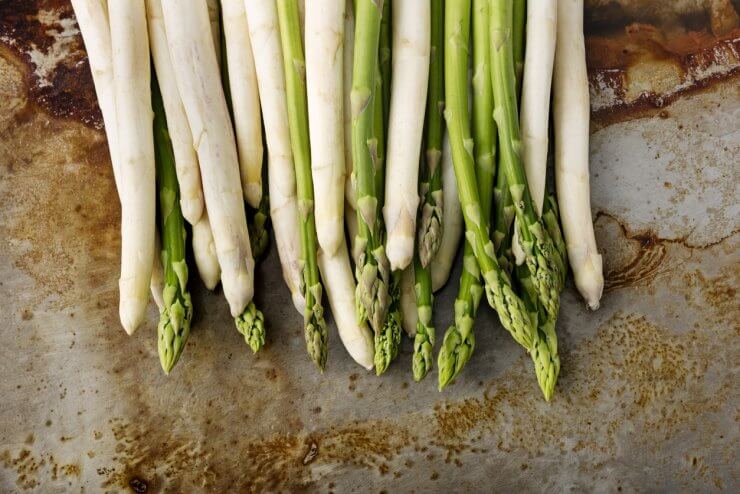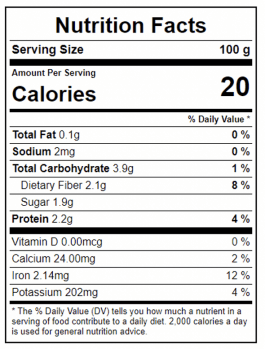
Asparagus is loaded with nutrients
The water content of asparagus is around 94%—the other 6% consists mainly of carbohydrates and fiber—making it a filling food with very few calories. Asparagus is a good source of fiber, providing about 4 grams per cup. Asparagus is also rich in vitamins A, E, and K, iron, and antioxidants, and a serving provides one-third of the folic acid the average person needs daily. Though green asparagus is considered the most nutritious and higher in fiber, white and purple varieties come in close behind. Purple asparagus has about 20% more sugar than the others, but it provides antioxidants.
Here is the nutrition information for 100 grams (about a half cup) of green asparagus:

The main plant compounds in asparagus are:
- Anthocyanins. Anthocyanins are flavonoid compounds that are responsible for the deep purple color of purple asparagus. In addition to acting as antioxidants and fighting free radicals, anthocyanins may offer anti-inflammatory, anti-viral, and anti-cancer benefits.
- Phenols. Phenols are antioxidants. Phenol-based compounds have been found to have some cancer prevention properties.
- Vitamins K and E. These antioxidants help the body fight off “free radicals,” or oxygen particles that cells produce as waste. Free radicals can damage the DNA of nearby cells, leading to cancer, heart disease, and other health problems. The antioxidants in asparagus help remove these free radicals from your system.
- Vitamin K. Vitamin K helps blood clot properly, and a vitamin K deficiency can lead to problems like uncontrolled bleeding after an injury. Consuming enough vitamin K through vegetables like asparagus can help make sure your blood clots like it’s supposed to.
- Iron. Iron is an essential mineral. If you don’t have enough iron, your body can’t make enough healthy oxygen-carrying red blood cells.
- Folic acid. Folic acid helps prevent anemia, tingling hands and feet, and even birth defects.
Did you know all these nutrition facts about asparagus? Please tell us what you think.


 Previous
Previous

